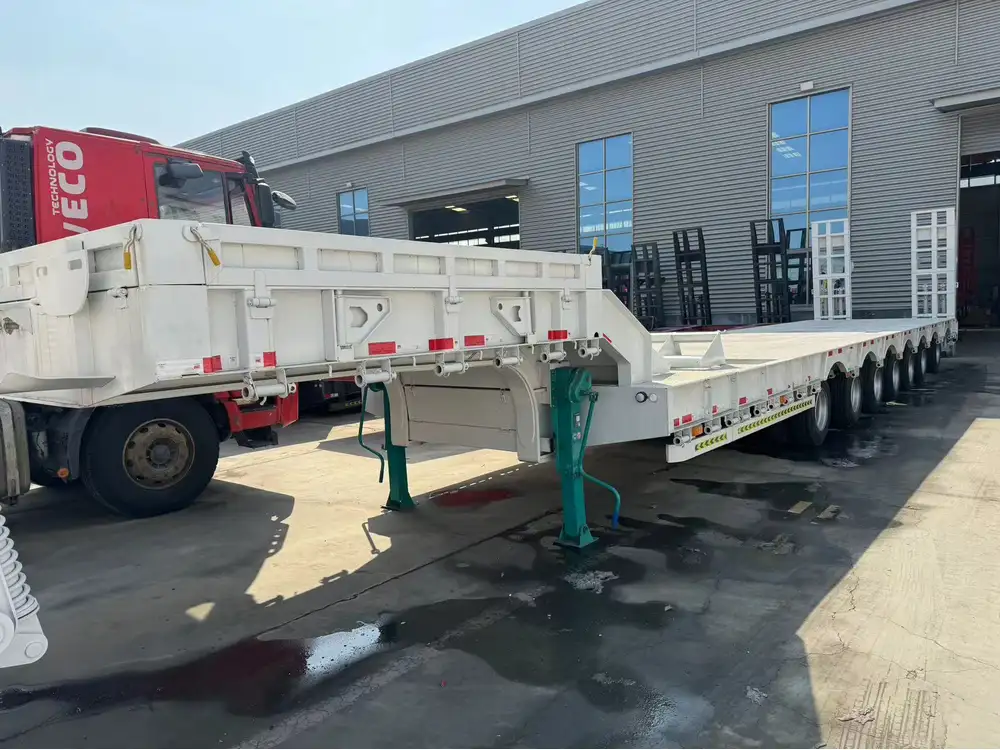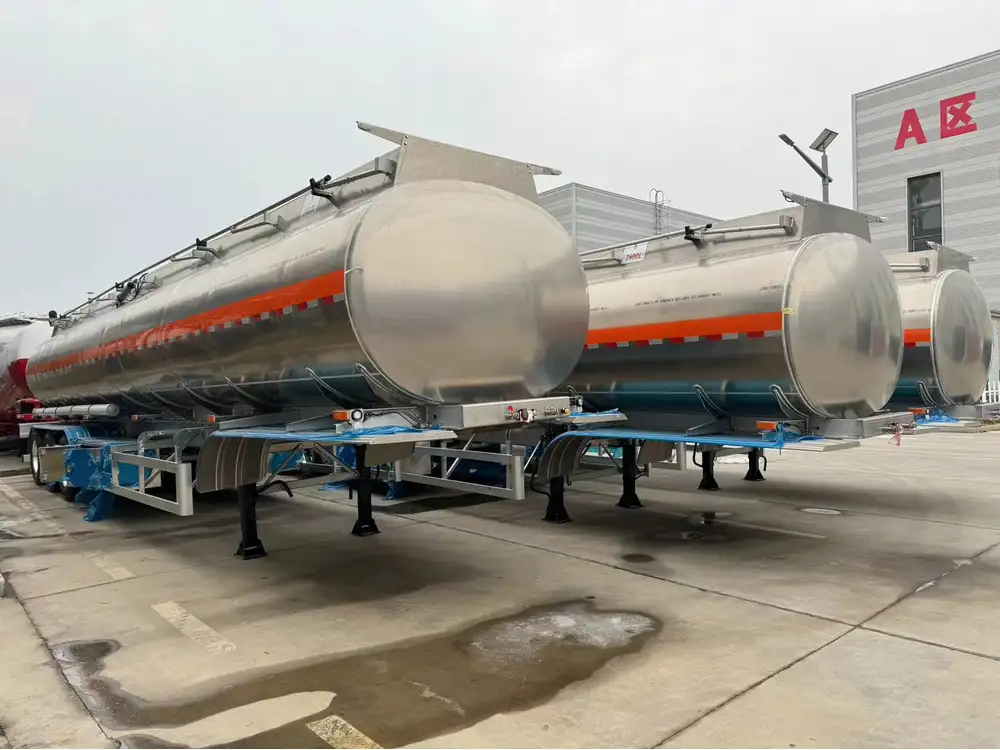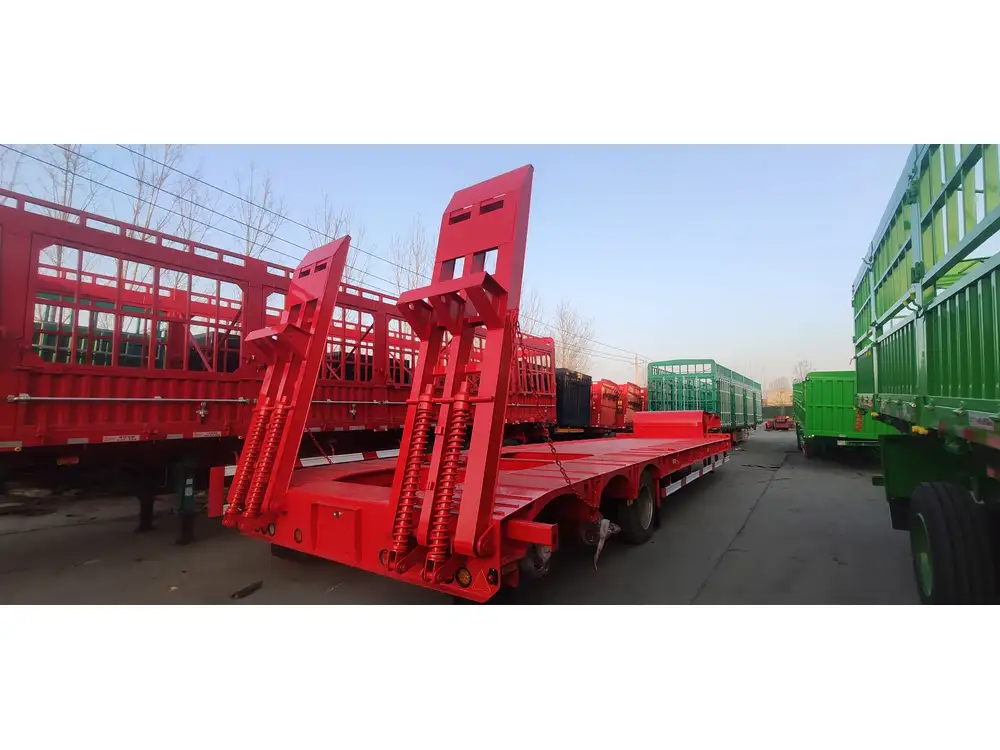Introduction to Side Tipper Hydraulic Systems
In the realm of heavy-duty transportation and logistics, the efficiency and reliability of semi-trailers are paramount. Among the various configurations, the side tipper semi-trailer stands out for its versatility and functionality. Central to its operation is the hydraulic system, a complex network that ensures smooth and precise tipping actions. At CarMax Vehicle, we specialize in designing and manufacturing robust hydraulic systems tailored for side tipper trailers, ensuring optimal performance and longevity.
Understanding the Hydraulic Diagram of a Side Tipper
A hydraulic diagram is a detailed schematic that illustrates the flow and interaction of hydraulic components within a side tipper system. This diagram is essential for engineers, technicians, and operators to comprehend how the system functions, identify potential issues, and perform maintenance effectively.

Components of a Hydraulic Diagram
A typical side tipper hydraulic diagram includes:
- Hydraulic Pump: Generates the pressure required to move the system.
- Reservoir: Stores hydraulic fluid necessary for system operation.
- Control Valves: Direct the flow of hydraulic fluid to various parts of the system.
- Actuators (Cylinders): Convert hydraulic energy into mechanical motion, enabling the tipping action.
- Hoses and Lines: Transport hydraulic fluid between components.
- Filters: Remove contaminants from the hydraulic fluid to protect the system.
Key Components of a Side Tipper Hydraulic Diagram
Hydraulic Pump
The heart of the hydraulic system, the pump, converts mechanical energy from the trailer’s engine into hydraulic energy. It is crucial for maintaining the necessary pressure to operate the tipper mechanism efficiently.

Reservoir
The reservoir serves as the storage for hydraulic fluid, ensuring a steady supply and accommodating fluid expansion and contraction due to temperature changes. It also allows for sediment and contaminants to settle, enhancing system longevity.
Control Valves
Control valves manage the direction and flow rate of the hydraulic fluid. They are pivotal in controlling the speed and force of the tipping action, allowing for precise operation.
Actuators (Cylinders)
Hydraulic cylinders are responsible for the lifting and lowering actions of the side tipper. They translate the hydraulic pressure into linear motion, facilitating the tipping process.

Hoses and Lines
These components are the conduits for hydraulic fluid, connecting the pump, valves, and actuators. High-quality hoses and lines are essential to prevent leaks and ensure efficient fluid transfer.
Filters
Hydraulic filters protect the system by removing impurities from the fluid, preventing damage to sensitive components and maintaining optimal performance.
How the Hydraulic System Operates
The operation of a side tipper’s hydraulic system involves a coordinated sequence of actions:
- Activation: When the operator engages the tipper mechanism, the control valves are actuated to direct hydraulic fluid from the reservoir.
- Pressurization: The hydraulic pump pressurizes the fluid, overcoming the resistance in the system.
- Flow Control: The control valves regulate the flow rate, determining the speed at which the tipper lifts or lowers.
- Actuation: Pressurized fluid flows into the hydraulic cylinders, causing them to extend or retract, thus tipping the trailer.
- Return Flow: After the tipping action, the fluid returns to the reservoir, readying the system for the next operation.

Benefits of an Efficient Hydraulic Diagram
An optimized hydraulic diagram offers numerous advantages:
- Enhanced Performance: Precise control over tipping actions ensures smooth and efficient operation.
- Reduced Downtime: A well-designed system minimizes mechanical failures, leading to increased uptime.
- Ease of Maintenance: Clear diagrams facilitate easier troubleshooting and repairs, reducing maintenance time and costs.
- Longevity: High-quality components and proper fluid management extend the lifespan of the hydraulic system.
Common Issues and Troubleshooting
Despite their robustness, hydraulic systems can encounter issues. Understanding these problems and their solutions is crucial for maintaining system integrity.
Leaks
Cause: Worn seals or damaged hoses. Solution: Regular inspections and timely replacement of faulty components.

Low Hydraulic Pressure
Cause: Insufficient fluid levels or pump malfunction. Solution: Check and refill hydraulic fluid; inspect and repair or replace the pump if necessary.
Contaminated Fluid
Cause: Exposure to dirt and debris. Solution: Implement regular fluid and filter changes to maintain cleanliness.
Sluggish Operation
Cause: Air in the system or clogged filters. Solution: Bleed the system to remove air; clean or replace filters.

Maintenance Tips for Hydraulic Systems
Proper maintenance is essential to ensure the longevity and reliability of side tipper hydraulic systems. Here are some best practices:
- Regular Fluid Checks: Monitor hydraulic fluid levels and quality, topping up as needed.
- Filter Replacement: Change hydraulic filters at recommended intervals to prevent contamination.
- Inspect Hoses and Connections: Look for signs of wear, cracks, or leaks and replace compromised hoses promptly.
- Monitor Pump Performance: Ensure the pump operates smoothly without unusual noises or vibrations.
- System Flushing: Periodically flush the hydraulic system to remove accumulated contaminants.
Innovations in Side Tipper Hydraulic Design by CarMax Vehicle
At CarMax Vehicle, we are committed to advancing hydraulic technology to meet the evolving demands of the transportation industry. Our innovations include:
Advanced Control Systems
Integrating electronic controls with hydraulic systems allows for more precise operation and enhanced safety features, such as automated tipping sequences and fail-safes.

Energy Efficiency
Our designs focus on reducing energy consumption by optimizing pump efficiency and minimizing hydraulic fluid wastage, leading to cost savings and environmental benefits.
Modular Designs
We offer modular hydraulic components that can be easily customized and upgraded, providing flexibility to meet specific client requirements and adapting to different load capacities.
Enhanced Durability
By utilizing high-grade materials and implementing rigorous testing protocols, our hydraulic systems are built to withstand harsh operating conditions, ensuring sustained performance over time.

Comparison: CarMax Vehicle vs. Competitors
When choosing a side tipper hydraulic system, it’s essential to consider factors such as reliability, efficiency, and support. Here’s how CarMax Vehicle stands out:
| Feature | CarMax Vehicle | Competitors |
|---|---|---|
| Customization | Highly customizable systems | Limited customization options |
| Innovation | Cutting-edge hydraulic designs | Standard, less innovative |
| Durability | Superior materials and testing | Average durability |
| Customer Support | Comprehensive support and maintenance services | Basic support |
| Energy Efficiency | Optimized for low energy consumption | Less efficient designs |
Our commitment to excellence ensures that clients receive top-tier hydraulic systems that enhance their operational efficiency and reliability.
Conclusion
Understanding the intricacies of a side tipper hydraulic diagram is crucial for the effective operation and maintenance of semi-trailers. At CarMax Vehicle, we provide comprehensive hydraulic solutions that are designed for performance, durability, and efficiency. Our expertise ensures that your side tipper systems operate seamlessly, minimizing downtime and maximizing productivity. Whether you are in need of designing a new hydraulic system or maintaining an existing one, our team is equipped to deliver solutions that meet and exceed industry standards.
Frequently Asked Questions

1. What is the primary function of a hydraulic pump in a side tipper system?
The hydraulic pump converts mechanical energy from the trailer’s engine into hydraulic energy, generating the pressure required to operate the tipping mechanism efficiently.
2. How often should hydraulic filters be replaced in a side tipper trailer?
Hydraulic filters should typically be replaced every 1,000 to 2,000 hours of operation, but it’s best to follow the manufacturer’s recommendations based on usage and operating conditions.
3. What are the signs of contaminated hydraulic fluid?
Signs include reduced system performance, sluggish tipping actions, visible debris or discoloration in the fluid, and potential damage to hydraulic components.

4. Can I upgrade the hydraulic system on my existing side tipper trailer?
Yes, many aspects of a side tipper hydraulic system can be upgraded, such as replacing the pump with a more efficient model or integrating advanced control systems for better performance.
5. Why is regular maintenance important for side tipper hydraulic systems?
Regular maintenance ensures the system operates smoothly, prevents unexpected failures, extends the lifespan of components, and maintains overall efficiency and safety.



